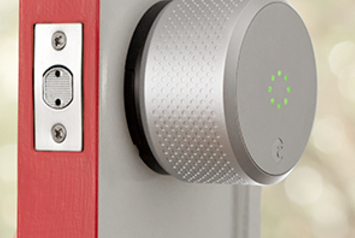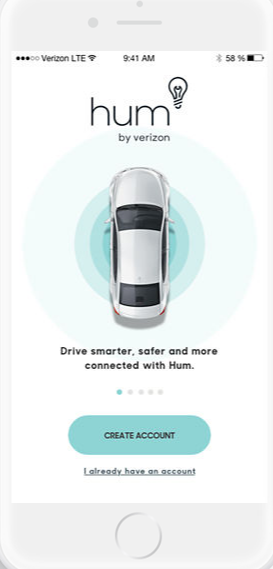
Let’s face it, most parents worry about their children and look for reassurances that everything is OK. And while you can’t know exactly that’s going on with your kids 24/7, there are ways that you can track their location, know when they’ve arrived home and even look in on them when they are at home.
Before I go into how, I’d like to talk about why, why not and how you might approach this issue.
Knowing where your child is can reduce your anxiety and enable you to take action if they’re not where they should be. Having said that, kids, especially teens, often want privacy and don’t want to share their location with their parents. If you’re inclined to use a tracking method, I suggest you talk with your kids about it in advance (never do it in stealth mode) and agree to some limits on how and when you’ll use it and how you’ll react to what you find. If you are one of those nervous parents (like me), explain to them that you’re only looking to see if they’re OK and not interested in tracking their every movement. Be judicious in how you use any tracking technology and don’t use it to spy on them so you can lecture them about where they’ve gone unless it really does raise a safety concern.
Smartphone tracking
There are ways to track your child’s phone, but there are some caveats. First, they have to have the phone with them. Second it needs to be charged and turned on and third it needs to be connected to the internet. Even phones that are fully charged can be temporarily offline if the signal is weak, and, of course, if your child has left the phone somewhere, you’ll be tracking the phone and not the child. Still, in most situations this will work.
If you know your child’s password
If your child has either an Android phone or an iPhone then you already have the technology you need. If you know their Apple or Google username and password then you can track them at any time using iCloud’s Find My iPhone feature by simply logging into their account. The same is true with Android’s Find Your Phone feature.
If you don’t know your child’s password
There are also ways to share your or your child’s location without having to know their password, but your child has to set this up in advance on their phone.
iPhone users can take advantage of Apple’s Find My Friends feature. All recent iPhones and iPads have the Find My Friend app. You simply need to open it, tap Add and then enter your friend or family member’s email address. Once someone has shared their location with you, you can find it in iCloud’s Find My Friends section.
Google has a similar app for both Android and iPhone called Trusted Contacts. As with Apple’s Find My Friends app, and the Google app will show the person’s current location if they are online or their last known location if their phone isn’t online.
There are several family or friend tracker apps available for Android, in fact one of them is called Find My Friends.
Verizon offers a $9.99 a month Family Locator service that works with a variety of phones on its network. Another option (for smartphones only) is Glympse which allows people to share their location but the limit with Glympse is that (to prevent stalking), it has to be configured every four hours. It’s not a set and forget type of service.
Here are more family tracker apps from CNET.
Wearable tracking devices for young children
If you have young children or even teens who don’t have a phone, you can purchase a tracking device that will locate your child, assuming they have it with them.
There a number of devices on the market as this roundup from Tom’s Guide shows. Some, like the Trax, are designed to be clipped to a backpack or your child’s belt. It can establish a “geo-fence” so you’re notified if your child is somewhere that they’re not supposed to or likely to be. Others like the Flip 2 GPS Watch can be worn on a wrist. Many of these products require that you subscribe to a cellular service for the device so consider the ongoing costs. Another option is the PocketFinder+ Personal 3G GPS tracker which can be used to track people, pets and vehicles.
Smart door locks and security cameras

Smart locks and cameras in your home won’t help if your kids are away from home, but they will let you know if they’ve arrived home. Just about all the major smart locks support apps and websites that enable you to know when your door was opened and by whom. In most cases you can assign different codes to each family member so you know who opened the door and when. There are many smart locks on the market from the usual lock companies like Kwikset and Schlage, but one of the easiest ones to install is August that fits over your existing lock.
Security cameras can also give you piece of mind by showing you who has entered your house or, in some cases, what they’re doing in the house if they’re in range. Many of these cameras, like the Canary, allow you to speak to the person in the house from a remote location via a your phone app or web site. Safewise has a directory of home security cameras, showing such features as motion detection and 2-way talk back.
Tracking teens in cars

Why the smartphone tracking will work while your child is in motion, there are also devices that can track their car and even how fast they’re driving. Hum by Verizon gives you a great deal of information about your car’s location and speed. You can even set an alert if it goes outside of a designated zone. Parents can also set a speed alert and be notified if the car reaches or exceeds that speed. Hum also has a speaker/microphone so the driver can call for help and, if there’s an accident, it will notify first responders. It also provides information on the car’s health and comes with roadside assistance. Hum starts at $30 a month but requires a $10 a month subscription fee plus a $20 activation fee.
Automatic Pro is a $129 device that does many of the things Hum does with no monthly subscription cost. It will allow the parent to track the car while it’s in motion and know where it’s parked. Like Hum it will notify authorities in an accident but there is no built-in phone or roadside assistance.